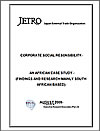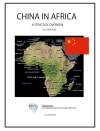 Madagascar Oil Sa (MOL)
Madagascar Oil Sa (MOL)
All data are collected in the Fiscal Year of 2008-2009.
Company Profile and History
Madagascar Oil SA (a subsidiary of Madagascar Oil Limited, Bermuda) is a Malagasy company, founded by Sam Malin with Australian businessmen Alan Bond and Robert Nelson in 2004. It holds the large heavy oil fields of Tsimiroro and Bemolanga. It operates the former, whilst its farm-in partner, French super major Total S.A. operates the latter.
Since 2004, the Group has held the leading onshore acreage and resource in Madagascar. These interests cover approximately 30km2 onshore Madagascar. In March 2006, simultaneously with a US$60m fund raising to North American managed hedge funds, the company was reorganised under Madagascar Oil (Bermuda) from its original parent company of Madagascar Oil (Mauritius).
In 2004 Madagascar Oil acquired the rights to operate on seven blocks in Madagascar. All of the blocks had been studied in prior years and two of the blocks; 3102 Bemolanga and 3014 Tsimiroro had been the subject of prior efforts by several companies dating back to the early 1900’s. The other five blocks; 3105 Manambolo, 3106 Morondava, 3107 Manandaza, 3109 Mandabe and 2103 Majunga, were the subject of various partially successful exploration efforts over the prior 40 years, none of which led to development.
In 2008 Madagascar Oil made the decision to withdraw from Block 3109 and in 2009 the company relinquished rights to Block 2103.
Madagascar Oil has taken Bemolanga (Block 3102) and Tsimiroro (Block 3104) from the level of interesting potential to the point of defining significant oil reserves in a field development area on each of the blocks. Work is continuing on Manambolo (Block 3105), Morondava (Block 3106) and Manandaza (Block 3107) to further define the prospects and identify potential drilling locations.
Tsimiroro is a heavy oil field (14º to 16º API) which is reported to hold, in terms of a best estimate of reserves (oil in place), 2 billion barrels with potential for light oil and natural gas. Tsimiroro is believed to be able to achieve at least 100,000 barrels of oil output per day over 20 years. First production was realised in March 2008. According to a company statement, “a single well was producing an initial flow rate of 65 barrels per day "of fluid" with a net 45 barrels of oil per day, and more steam injections were planned.”
Bemolanga is a large ultra heavy oil field (8º to 13º API) holding a potential resources of 16.6 billion barrels, with approximately 9.8 billion barrels of recoverable reserves. If development is successful, Bemolanga is expected to produce 180,000 barrels of oil per day for at least 30 years. Appraisal and planning work began in mid-2009, while the development project is planned for 2013.
The five Madagascar Oil blocks represent an area of approximately 31,000 square kilometres (7.7 million acres). This is equivalent to an area that encompasses a large portion of the North Sea. Each of the blocks comprises 4,000 to 7,000 square kilometres and the two field areas, Bemolanga and Tsimiroro are approximately one tenth of the area of their respective blocks.
The principal challenge for crude oil production in Madagascar is the lack of any local refining capability. Madagascar Oil contracted Pervin and Gertz in late 2007 to examine the export markets and potential pricing for both Bemolanga and Tsimiroro crude. The study concluded that there is substantial market capability for the crude in Asia and on the US Gulf Coast.
In Country Location
Immeuble Trano Fitaratra, 9eme Etage, Antananarivo 101, Madagascar
Services and Products
Madagascar Oil focuses on the development, exploration and production of petroleum. It is the principal onshore oil company in Madagascar in terms of oil resources and acreage.
Number of Employees
75 employees
Financial Information
In October 2006, the Company raised US$25 million at US$2.50/share from existing shareholders. In March 2007, the Company completed an US$85 million Development Capital Facility with Credit Suisse. In September 2008, the company announced a farm out of 60 percent of the Bemolanga oil field to French oil major, TOTAL, for US$100 million. Part of the proceeds was used to pay off Credit Suisse, the company’s only long-term creditor. The company has a cash balance of around US$6 m illion.
Current estimates show this company has annual revenue of US$600,000.
Market Share
On a net basis, MOL is the largest owner of licensed acreage onshore Madagascar, an area in excess of 32,000km2. The Bemolanga field is believed to be one of the largest undeveloped bitumen reserves in the world with an estimated 16.6 billion barrels of oil of which 9.8 billion barrels are probable and possible recoverable reserves.
Madagascar comprises five basins totalling 320,000 square kilometres (123,550 miles).
Business Objective
“To be the leading in situ and mining producer of light, heavy, and bitumen oil onshore Madagascar”
Business Model
“Madagascar Oil is a privately-held oil and gas company with the largest onshore exploration and development rights in Madagascar. By using superior technology and operational excellence to maximise value for the benefit of its shareholders and the people of Madagascar in an environmentally and socially responsible way, the company aims to realize its objective to be the leading in situ and mining producer of light, heavy, and bitumen oil onshore in Madagascar.
In particular the company’s strategy aims to define and characterise the Tsimiroro discovery in a methodical and technically superior manner to take it to full development by the definition and appraisal of the reservoir, the evaluation of thermal recovery methods, and the evaluation of optimal upgrading technology as it relates to an integrated well to market approach; continue to evaluate the potential of our existing exploration blocks; and to maintain our existing strong relationships with the Government and the people of Madagascar.
The objective of the 2009 and 2010 programs will be to refine the oil saturation data, determine the optimum recovery method and prepare for a decision on the construction of a pilot extraction plant by early 2011.”
Ownership of Business
Madagascar Oil holds a 100 percent interest in Tsimiroro and 40 percent in Bemolanga (Total 60 percent). Major institutional shareholders include Touradji Capital Management, RAB Capital, Persistency Capital and Grafton Resources.
Benefits Offered and Relations with Government
Madagascar Oil's projects are governed by production sharing agreements signed with the Madagascan National Office of Mines and Strategic (OMNIS), the relevant Malagasy government agency, in 2004. These agreements give the Government of Madagascar a significant stake in future production.
Madagascar Oil’s Production Sharing Contracts (“PSCs”) were negotiated at a very favourable time and contain attractive terms and conditions. These contracts have time sensitive obligations and milestones over the next several years however; the potential requirements for the exploration work in Blocks 3105, 3106 and 3107 will obligate the company to specific actions in 2010.
The Madagascan transitional government has decided to revise the oil exploration code, which was first promulgated in 1996. As the oil sector has been evolving, the oil code has to be amended to cope with the new trend, Mamy Ratovomalala, minister of mines and hydrocarbons under the transitional government, said in September 2009.
The amendment of the oil code was scheduled to be completed by the end of 2009 he said adding that "the new petroleum code will allow us to regulate the sector of petroleum research in the island country."
At present the fiscal regime provides for the following:
Royalties (Sliding Scale Base)
| Wellhead Crude Oil Royalty (expensable) | |
|---|---|
| Production tranche (b/d) | Royalty rate |
| 0 - 25,000 | 8 % |
| 25,000 - 50,000 | 10 % |
| 50,000 - 75,000 | 12 % |
| 75,000 - 100,000 | 14 % |
| 100,000 - 130,000 | 17 % |
| over 130,000 | 20 % |
| Wellhead Natural Gas Royalty (expensable) | |
|---|---|
| Production tranche (mm cu m/d) | Royalty rate |
| 0 - 12 | 5.0 % |
| 12 - 24 | 7.5 % |
| 24以上 | 10.0 % |
Income Tax
Flat rate of 35 percent, exploration expenditures are immediately (100 percent) expensed, and development expenditures (including interest expense) are depreciated over four years using the straight-line method. Unlimited carry forward of exploration expenditures is allowed, and of development costs up to a seven-year limit.
Fiscal Treatment of Different Contracts
Recoverable expenditures are recoverable from a Cost Oil maximum of 65 percent of Available Production (Total Production less losses and Royalty). The balance of Available Production not used for Cost Recovery (35 percent plus any unused Cost Oil) is shared between the oil company and the National Oil Company (NOC) in accordance with a sliding scale calculated according to an 'R' factor. 'R' is basically the company's cumulative gross revenue divided by his cumulative undepreciated and undiscounted expenditures (including taxes, bonuses, etc.) under the contract. The values of 'R' and the production sharing ratios are negotiated on a contract-by-contract basis.
Product Development
Total is carrying out an aggressive program in 2009 and 2010 to further define the mining potential for the Bemolanga Field. An additional play exists in the northern portion of the block in the Isalo I sandstones at a depth of 300 meters. This opportunity will be tested with 10 additional wells in 2009 and 2010. If commercial amounts are discovered, this deposit would not require mining and is likely to be extracted utilizing conventional steam flood techniques.
PSC’s 3105, 3106 and 3017 were re-evaluated by Madagascar Oil in late 2008, and several high potential areas have been identified that warrant further investigation. These areas build on the knowledge from prior drilling and have defined potential reservoir structures that exceed 1.0 billion barrels in size.




